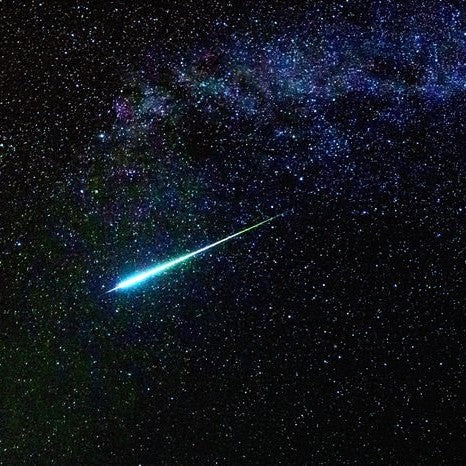Hello, stargazers! I’m popping in to chat a bit about two of the final six meteor showers for 2020, which are the Orionids and the Taurids. Tomorrow and Thursday are the peak days to catch the Orionids in action, especially since the waxing crescent moon should be an ever enchanting, but not competing, sight in the night sky.

The Orionid meteor shower is active annually around October 2nd through November 7th, when the Earth encounters debris left behind from Comet Halley. You can expect to see an average of ten to twenty meteors per hour, with the greatest chance of witnessing these “shooting stars” in the wee hours before dawn.
The Orionids are particularly fast moving fireballs, crashing into the Earth’s atmosphere at approximately 41 miles/66 kilometers per second. Although they tend to be on the faint side of visibility for the naked eye, almost half of the meteors leave persistent trains behind them, which are ionized gas trails that last for a few seconds after the meteor’s short sky debut.
As you probably already gathered, the Orionids radiate from the constellation Orion – and more specifically, the hunter’s club – which ascends from the east in the hours following midnight. If you’re familiar with Orion’s bright and beautiful star Betelgeuse, look to the north of it for the radiant point.

Originally, the Taurids was a well-known and anticipated sky show; however, due to gravitational perturbations of planets (that’s fun to say, eh?), especially Jupiter, the Taurids have spread out over time and are now considered two different meteor showers: the Southern and the Northern.
The Southern Taurids make an annual appearance from around September 10th through November 20th, with the expected peak this year being the 29th and 30th. But don’t anticipate a wild climax due to the toned down nature of the shower itself and the dazzling waxing gibbous moon that will be sharing the spotlight. The Northern Taurids overlap and flare up from October 20th through December 10th, with the peak expected to be November 11th and 12th.
These showers are a product of far-flung debris broken off Comet 2P/Encke and asteroid 2004 TG. The Taurids enter our atmosphere at a much slower pace than the Orionids, with an average speed of 17 miles/28 kilometers per second, and at a trickling rate of only about five meteors per hour. As your sleuthy self probably deduced already, the radiant can be found in the constellation of Taurus, which lies immediately northwest of Orion.
Fun Fact: The Taurid meteors are actually a bit meatier (see what I did there?) than other fireballs because they are made up of heavier material, such as pebbles, versus dust grains like most other meteors.
xo
B
B

